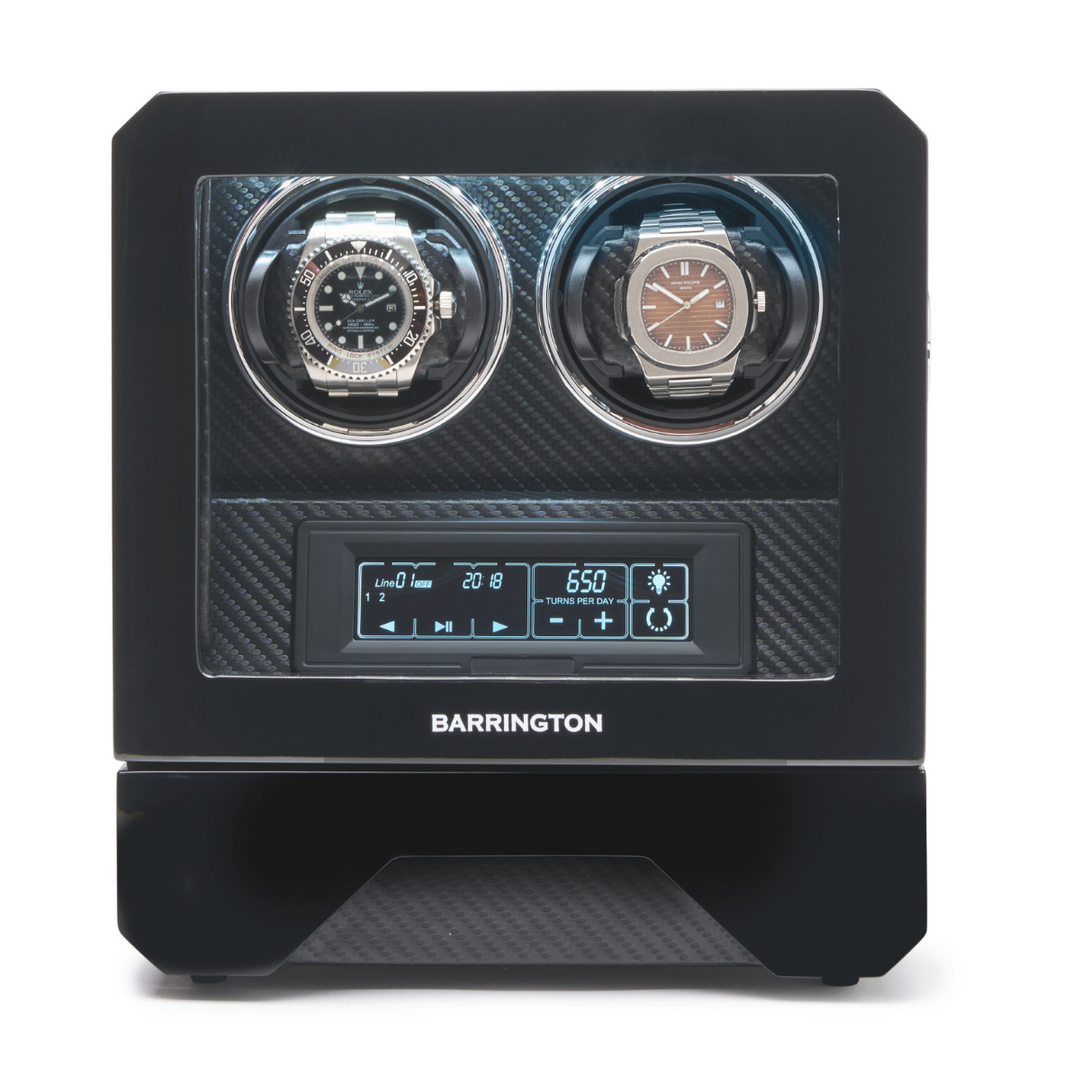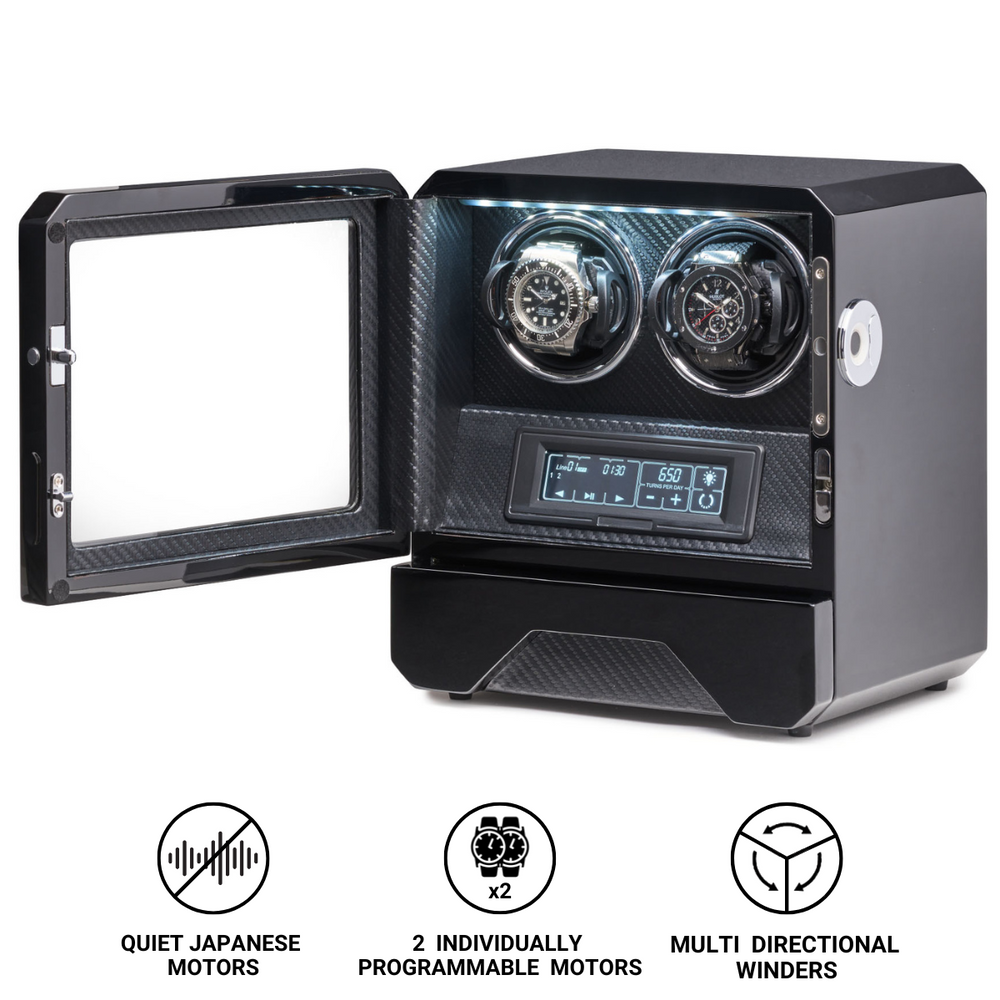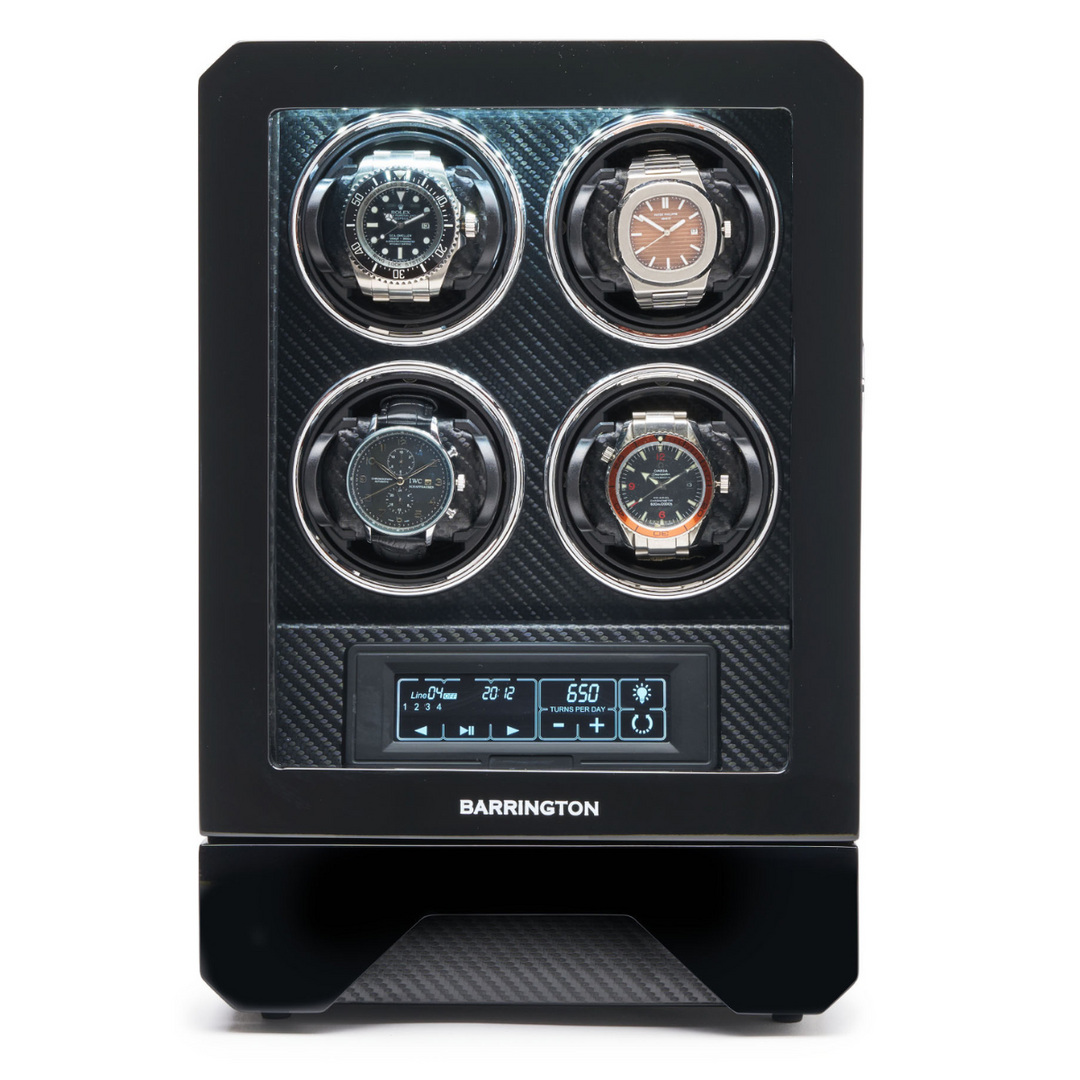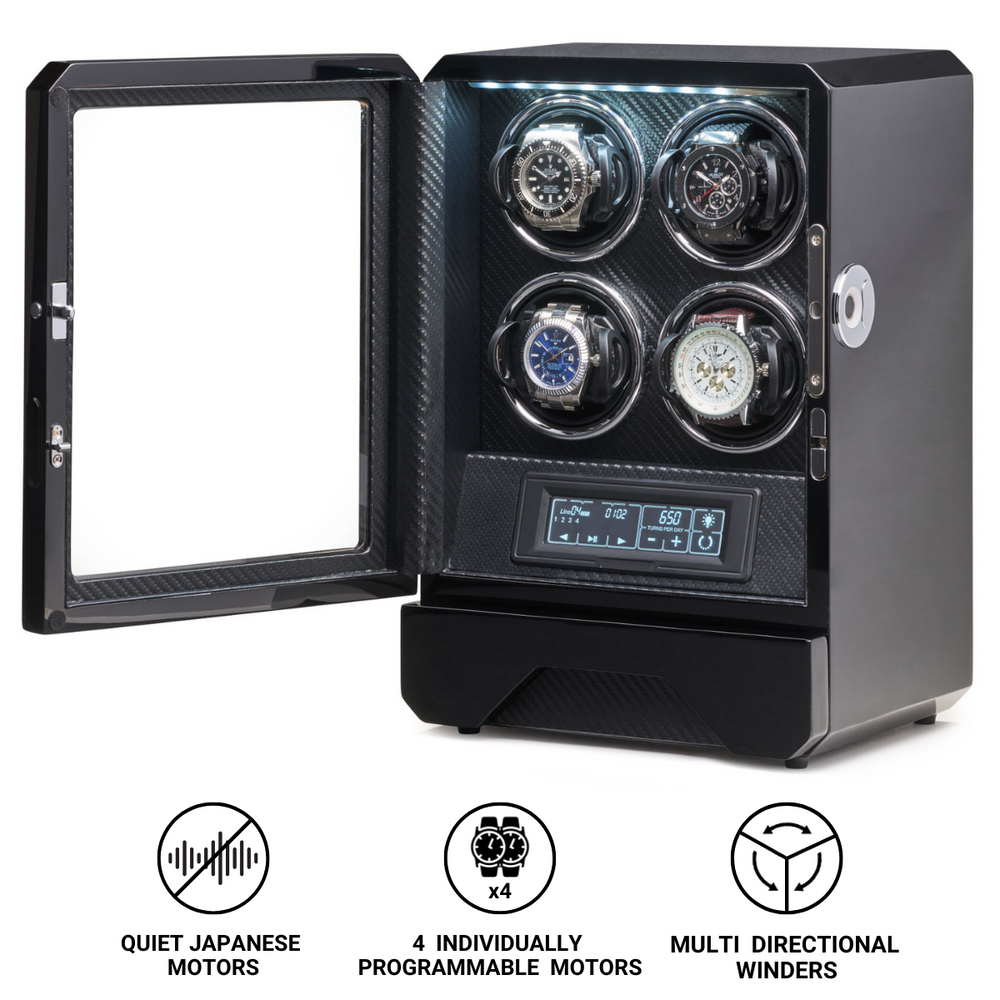Manual vs Automatic Watches: Understanding the Key Differences
Mechanical watches are more than just time-telling tools, especially in a world where a quick glance at your phone tells the time, wearing a mechanical watch feels special, it offers a more meaningful link to the history of watchmaking.
Many people mistakenly believe that automatic watches belong to a different category than mechanical watches. In reality, all automatic watches are mechanical, but not all mechanical wаtches are automatic. What’s the key difference, one might ask? How they stay powered.
-
Manual watches require regular winding by turning the crown to keep them running.
-
Automatic watches have a built-in rotor that winds the mainspring using the natural motion of the wearer’s wrist.
In this guide, we’ll break down the key differences between these two types of mechanical watches, so you can figure out which one feels right for your lifestyle and personal taste. So, let’s dive in!
Understanding Mechanical Watches: The Heart of Traditional Timekeeping
A mechanical watch isn’t just a tool for telling time— it combines aesthetic appeal with traditional craftsmanship. Unlike quartz watches, which rely on electronic circuits and batteries, mechanical timepieces are powered by a mainspring—a coiled piece of metal that slowly unwinds to drive the watch’s movement. This method of timekeeping has been refined for centuries and remains beloved by watch enthusiasts and collectors worldwide.
How a Mechanical Watch Works
At the core of every mechanical watch is a meticulously crafted movement made up of tiny, interdependent components. Here’s a closer look at the key elements that bring a watch to life:
-
Manual Winding: In a trаditіonal manually wound watch, you turn the crown to tighten the mainspring inside the barrel. As the mainspring gradually unwinds, it releases energy that powers the movement.
-
Balance Wheel: Acting like a pendulum, the balance wheel oscillates back and forth, ensuring the watch maintains a consistent rhythm.
-
Escapement Mechanism: This component regulates the energy released from the mainspring, allowing the watch hands to move in precise, controlled steps rather than a continuous sweep.
These elements work in perfect harmony, allowing a mechanical watch to function smoothly—without a single electronic component.
Why Mechanical Watches Are So Highly Valued
What makes mechanical watches special? Well, first of all, it's incredibly captivating. Each movement is assembled with incredible precision, often consisting of hundreds of tiny parts, all working together in perfect synchronization.
Another major advantage? No batteries required. A mechanical watch runs purely on stored kinetic energy, making it a truly self-sustaining timepiece. With proper care, a well-made mechanical watch can last a lifetime—or even generations, becoming a treasured heirloom.
For collectors and enthusiasts, owning a mechanical watch isn’t just about function—it’s about enjoying the craftsmanship and rich history behind every tiny, carefully made piece.
What Are Automatic Watches? The Evolution of Self-Winding Timepieces
Imagine a watch that keeps itself running as long as you wear it—no need to wind it daily. Well, you don’t have to imagine it, because that’s exactly what automatic watches, or self-winding watches, are designed to do.
Like their manual counterparts, automatic watches are fully mechanical, powered by a mainspring rather than a battery. The difference? They wind themselves. Thanks to an ingenious mechanism, an automatic watch harnesses the natural movement of your wrist to keep the mainspring wound. This makes them a perfect choice for anyone who wants the charm of a mechanical watch without the daily ritual of winding.
How Do Automatic Watches Work? The Magic of the Rotor
The secret behind an automatic watch lies in its rotor—a semi-circular weight inside the case that pivots as you move. Here’s how it works:
-
The rotor spins when your wrist moves.
-
This motion transfers energy through a system of gears, gradually winding the mainspring.
-
The watch stays powered as long as it’s worn regularly.
Some automatic watches feature unidirectional winding, where the rotor winds the mainspring in only one direction, while others use a bidirectional system, capturing energy no matter how the rotor moves. Modern movements also include features like ball-bearing-mounted rotors and reversers, which maximize efficiency and ensure smoother energy transmission.
The Rise of Automatic Watches: A Game-Changer in Horology
The idea of a self-winding watch dates back to the late 18th century, but it wasn’t until the early 20th century that automatic movements gained popularity.
-
In 1923, British watchmaker John Harwood created the first practical automatic wristwatch, featuring a pivoting weight that moved with the wearer’s motion.
-
In 1931, Rolex revolutionized the industry with its Perpetual movement, introducing an improved rotor system.
-
By 1948, Eterna refined the design, adding ball bearings to the rotor, making automatic movements smoother and more efficient.
Since then, automatic watches have become a staple in luxury watchmaking, offering the perfect blend of traditional craftsmanship and everyday practicality. Whether you’re a collector or just someone who values a reliable timepiece, an automatic watch provides effortless operation without sacrificing the beauty of mechanical engineering.
Key Differences: Manual vs Automatic Watches
While both manual and automatic watches fall under the category of mechanical timepieces, they differ in how they maintain power, their design, and overall practicality. Understanding these differences can help you decide which type best suits your lifestyle.
The key distinction lies in the winding mechanism:
-
Manual watches require regular winding via the crown.
-
Automatic watches use a self-winding rotor that harnesses wrist movement.
This affects factors such as power reserve, thickness, aesthetics, and convenience, as summarised in the table below:
|
Feature |
Manual Wind Watches |
Automatic Watches |
|
Winding Method |
Requires manual winding via the crown |
Self-winding through wrist movement |
|
Power Reserve |
Typically 36–48 hours |
Usually 40–70 hours |
|
Thickness |
Thinner due to no rotor |
Slightly thicker to accommodate the rotor |
|
Aesthetic Appeal |
Unobstructed view of the movement |
Rotor may partially obscure the movement |
|
Convenience |
Needs regular winding |
Runs as long as worn regularly |
For those who enjoy a hands-on connection with their watch, a manual wind timepiece offers a more interactive experience. The absence of a rotor also allows for a slimmer case, making these watches a popular choice for dress wear.
On the other hand, automatic watches are ideal for everyday practicality—as long as they are worn regularly, they remain powered without the need for manual winding. Although they tend to be slightly thicker, advancements in watchmaking have minimised this difference. Their longer power reserves also make them more forgiving if left unworn for a couple of days.
Ultimately, the choice comes down to personal preference—do you enjoy the ritual of winding your watch, or do you prefer the convenience of a self-sustaining movement?
Pros and Cons: Which One Is Right for You?
Deciding between a manual wind and an automatic watch depends on your lifestyle, habits, and how much you enjoy interacting with your timepiece. Each has its own strengths and drawbacks, so it’s worth considering the pros and cons before making a choice.
Advantages of Manual Wind Watches
-
Slimmer case profile – Without a rotor, manual watches are often thinner, making them ideal for dress watches that fit neatly under a cuff.
-
Unobstructed movement view – Enthusiasts appreciate the clear exhibition caseback, as there’s no rotor blocking the intricate mechanics.
-
The winding ritual – Many collectors enjoy the daily habit of winding their watch, as it creates a personal connection with the timepiece.
Disadvantages of Manual Wind Watches
-
Needs regular winding – Unlike automatics, manual watches must be wound every one to two days, which may not suit everyone’s routine.
-
Risk of over-winding – If wound too tightly, the mainspring can be damaged, requiring repairs.
Advantages of Automatic Watches
-
Effortless operation – As long as you wear it regularly, an automatic watch stays powered without needing manual winding.
-
Great for daily wear – Designed for continuous use, making them practical for those who prefer a low-maintenance option.
-
More variety – With a wider selection of models available, automatics dominate modern watchmaking, catering to all styles and budgets.
Both manual and automatic watches have their place in horology. The best choice depends on whether you appreciate the tradition and engagement of winding your watch or prefer the convenience of a self-sustaining movement.
Longevity and Servicing: How Long Do They Last?
Both manual and automatic watches are designed to last a lifetime, and with proper care, they can even be passed down through generations. Unlike quartz watches, which rely on electronic components that eventually degrade, mechanical movements can be serviced, repaired, and kept in working order for decades.
To maintain accuracy and longevity, most experts recommend servicing a mechanical watch every 5–10 years, which involves cleaning, lubricating, and regulating the movement to prevent excessive wear.
Do Automatic Watches Need More Frequent Servicing?
While both types of mechanical watches require regular maintenance, automatic watches may need servicing a bit more often. Since their rotor and winding gears are constantly in motion when worn, they experience slightly more wear and tear over time. That said, the difference in servicing intervals isn’t significant—most high-quality automatics can run for years without issues.
Signs That a Watch Needs Servicing
It’s important to pay attention to any signs that your watch may need professional servicing:
-
Loss of accuracy – If your watch is running too fast or too slow, it may need regulation.
-
Reduced power reserve – If a full wind doesn’t last as long as expected, the mainspring or lubrication might need attention.
-
Difficulty in winding – If winding the crown feels stiff, rough, or inconsistent, internal components could be worn or dry.
Why Professional Servicing Matters
A mechanical watch is a precision instrument, and servicing should only be done by a qualified watchmaker. Be careful—attempting to lubricate or repair it yourself can cause irreversible damage. A professional service ensures that the movement is cleaned, properly lubricated, and regulated, keeping your watch running smoothly for years to come.
With the right care, a well-made mechanical watch isn’t just a timepiece—it’s an heirloom that can last for generations.
Keeping Your Automatic Watch Running: Barrington Watch Winders
Automatic watches stay powered through wrist movement, but if left unworn for too long, they will eventually stop. That’s why we need watch winders —they keep our timepieces wound and ready to wear, saving the hassle of resetting the time and date. At Barrington, we blend smart tech with sleek design to keep your watch running smoothly and looking great!
Barrington Single Winder - Glacier White
(The Barrington Single Watch Winder in Glacier White combines sleek design with cutting-edge functionality, making it an essential accessory for any automatic watch owner. Its compact size ensures it fits seamlessly into any space, while the ultra-quiet Japanese motor delivers whisper-silent operation, perfect for use in a bedroom or office.
Designed for versatility, this winder offers multiple rotation settings—clockwise, counter-clockwise, or alternating—allowing it to accommodate a wide range of automatic watches. With adjustable Turns Per Day (TPD) settings ranging from 650 to 1,950, it ensures optimal winding for any watch, maintaining its accuracy and longevity.
For added convenience, the flexible power options allow operation via AC mains or AA batteries, making it ideal for both home and travel use. The innovative ‘Jump’ feature lets you connect multiple winders together, powering them from a single AC source for a streamlined display.
Available with a choice of standard or flex cushions, the winder provides a secure fit for different wrist sizes, ensuring your timepiece is always cradled safely. Ready for immediate dispatch, this premium watch winder is the perfect blend of style, performance, and reliability).
Barrington Special Edition Single Winder - Santos Rosewood
(Crafted for those who appreciate both luxury and precision, the Barrington Special Edition Single Watch Winder in Santos Rosewood combines sophisticated aesthetics with state-of-the-art functionality. Its sleek rosewood finish adds a touch of refinement to any setting, while the ultra-quiet Japanese motor ensures whisper-silent performance, making it perfect for bedrooms, offices, or display cabinets.
Designed to cater to all automatic watches, this winder features customisable rotation settings, allowing you to choose between clockwise, counter-clockwise, or alternating movement. With multiple Turns Per Day (TPD) options ranging from 650 to 1,950, it provides optimal winding tailored to your watch’s specific needs, ensuring long-term accuracy and reliability.
For ultimate convenience, the flexible power options allow operation via AC mains or AA batteries, making it suitable for home or travel use. Additionally, the innovative ‘Jump’ feature lets you connect multiple winders together, powering them from a single source—ideal for collectors with multiple timepieces.
With a choice of standard or flex cushions, this winder accommodates a wide range of wrist sizes, securing your watch safely while maintaining its precision. A premium blend of elegance, performance, and advanced technology, the Santos Rosewood edition is a must-have accessory for any automatic watch enthusiast).
4 Watch Winder
(Designed for collectors and enthusiasts, the Barrington 4 Watch Winder offers premium craftsmanship, cutting-edge technology, and seamless functionality. With four individually programmable rotors, it ensures each automatic timepiece receives the precise winding it requires. The carbon-fibre-effect interior and high-gloss exterior add a sophisticated touch, making it a statement piece in any room.
Equipped with ultra-quiet Japanese motors, this winder delivers whisper-silent operation, ideal for bedrooms, offices, or display cabinets. The digital touchscreen display allows effortless control over rotation settings, while the included remote control provides added convenience. A standout feature is the fingerprint scanner, offering enhanced security by allowing access only to authorised users.
This winder supports multiple rotation directions (clockwise, counter-clockwise, or alternating) and offers customisable Turns Per Day (TPD) settings from 650 to 1,950, accommodating watches of all weights and movements. For added functionality, it includes a built-in storage drawer, perfect for safely housing quartz watches and accessories.
Powered via AC mains with an international adapter included, the Barrington 4 Watch Winder is the ultimate fusion of luxury, security, and precision, ensuring your prized timepieces remain in perfect condition at all times).
Whether you have just one automatic watch or a full collection, a quality watch winder helps keep them running smoothly, maintaining accuracy and preventing unnecessary wear. Barrington’s range of watch winders ensures your timepieces are always ready to wear while doubling as an elegant display solution.
Who Should Choose What? A Buyer’s Guide
Choosing between a manual-wind and an automatic watch depends on each person’s personal preference and lifestyle. Here’s a quick guide to help you find the right fit:
-
For Traditionalists and Purists → Manual-Wind Watches. If you appreciate classic watchmaking and enjoy the ritual of winding your timepiece, then a manual watch is your perfect choice! With a slimmer case and a movement you can see in detail, these watches are often favoured for formal occasions. Notable examples include the Patek Philippe Calatrava and the Omega Speedmaster Moonwatch
-
For Everyday Convenience → Automatic Watches. If you prefer a watch that keeps running without the need for daily winding, an automatic is the more practical option. Designed specifically for daily wear, it stays powered as long as you wear it regularly. Popular models include the Rolex Submariner and the Tudor Black Bay.
-
For Collectors → A Balance of Craftsmanship and Functionality. Watch collectors often appreciate both manual and automatic movements, depending on their priorities. A manual watch offers an unobstructed view of the movement, while an automatic provides effortless operation—ideal for those who like to rotate their collection.
Whether you’re drawn to the hands-on charm of a manual watch or the convenience of an automatic, the best choice is the one that complements your lifestyle and personal taste.
Conclusion: The Best of Both Worlds
Both manual-wind and automatic watches stand as testaments to the artistry and precision of traditional horology. Ultimately, the optimal choice hinges on an individual's personal priorities and the values they attribute to a fine timepiece.
-
If you enjoy the ritual and heritage of winding your watch, a manual movement is the perfect fit.
-
If you prefer convenience and practicality, an automatic watch is the better choice.
And this brings us to the main question – why not have both? Many collectors appreciate the unique qualities of each, building a versatile collection suited for different occasions and moods.
Whichever you choose, keeping your automatic watches running smoothly is key. At Barrington Watch Winders we get that, which is why we offer high-quality solutions to keep your timepieces powered, accurate, and always ready to wear. Explore our collection today and find the perfect winder to complement your watches!
Understanding the Differences Between Manual and Automatic Watches
What is the main difference between a manual and an automatic watch?
Manual watches require the wearer to wind the crown regularly to keep the movement running, whereas automatic watches use a self-winding mechanism powered by wrist movement. The key component in an automatic watch is the rotor, which spins and winds the mainspring as the watch is worn. This means that while a manual watch must be wound every day or two, an automatic watch can continue running as long as it is worn regularly. However, both types of watches share the same fundamental mechanical principles, making them part of the broader category of mechanical timepieces.
Do automatic watches need to be wound manually?
Yes, automatic watches still require occasional manual winding, especially if they are not worn regularly. If an automatic watch is left unworn for an extended period, its power reserve will deplete, and the watch will stop running. In such cases, winding the crown a few times before wearing it will help restart the movement and ensure optimal timekeeping. Many enthusiasts also manually wind their automatic watches from time to time to keep the mainspring evenly tensioned and maintain accuracy.
Which type of watch is more durable: manual or automatic?
Both manual and automatic watches can be highly durable if properly maintained, but automatic watches have more moving parts, which may require more frequent servicing. The addition of the rotor and winding mechanism in automatic watches means there is slightly more wear and tear over time. Manual watches, being simpler in design, tend to be thinner and may have fewer components that require maintenance. Regardless of the type, both watches benefit from regular servicing every 5–10 years to ensure longevity and accuracy.
Are manual wind watches more accurate than automatic watches?
Accuracy in both manual and automatic watches depends more on the quality of the movement than the winding mechanism. Some high-end manual wind watches are incredibly precise, but they rely on consistent winding to maintain that accuracy. Automatic watches, on the other hand, benefit from a more stable power reserve if worn regularly, which can help maintain accuracy over time. Both types of watches require periodic regulation and servicing to ensure they run within the expected precision standards.
Which type of watch is better for everyday wear?
For everyday wear, automatic watches are often the preferred choice due to their convenience and self-winding capability. As long as the watch is worn regularly, it will maintain power without the need for frequent manual winding. However, for those who appreciate the tradition and engagement of winding a watch daily, a manual wind watch can be a satisfying and personal experience. The decision ultimately depends on the wearer’s lifestyle and whether they prefer ease of use or the interaction of manually winding their timepiece.














